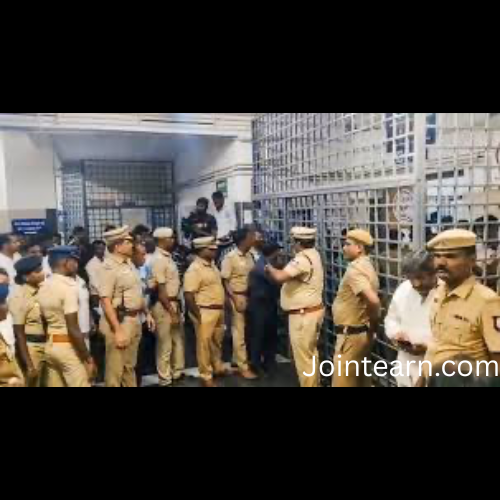New Delhi, November 10, 2025: The Delhi High Court on Monday announced that it will consider on January 28 a request by the National Investigation Agency (NIA) to hold in-camera proceedings for its petition seeking the death penalty for Jammu Kashmir Liberation Force (JKLF) chief Yasin Malik in a terror funding case.
The bench, comprising Justices Vivek Chaudhary and Manoj Jain, agreed to list the matter for hearing after NIA counsel Akshai Malik requested a separate video link to ensure that the proceedings would not be accessible to the public. The request pertains to a high-profile appeal filed by NIA against a May 24, 2022, trial court verdict which had sentenced Yasin Malik to life imprisonment after convicting him under the Unlawful Activities (Prevention) Act (UAPA) and sections of the Indian Penal Code (IPC).
Background of the Case
Yasin Malik, the JKLF chief, had pleaded guilty in 2017 to charges related to terror funding, spreading terrorism, and secessionist activities in Jammu and Kashmir. He was convicted for multiple offences, including section 121 of the IPC (waging war against the Government of India) and section 17 of the UAPA (raising funds for terrorist acts). While section 121 carries a minimum punishment of life imprisonment and a maximum of death, the trial court had earlier held that Malik’s case did not fall under the “rarest of rare” category, thereby not warranting the death penalty.
NIA’s current appeal seeks to elevate the punishment to the death sentence, arguing the gravity of his actions and their impact on national security. The agency has also requested additional time to respond to Malik’s affidavit, submitted in August 2025, which provides his version of events and claims regarding past interactions with government authorities.
Yasin Malik’s Affidavit
In his 85-page reply to the NIA’s appeal, Yasin Malik, who is currently lodged in Tihar Prison, asserted that he had maintained close contact with government and intelligence officials following his decision to renounce armed struggle in 1994. He claimed that his engagement with authorities included closed-door meetings with top government representatives and interactions with prominent dignitaries as part of a ceasefire agreement.
Malik’s affidavit further stated that successive Union governments honored this ceasefire, including granting him bail in 32 pending militancy-related cases. He highlighted that during the tenure of Prime Minister PV Narasimha Rao, and subsequent administrations up to PM Narendra Modi’s first term until 2019, the understanding under the ceasefire agreement was respected, and none of the pending cases were actively pursued.
Psychological Impact and Opposition to Adjournment
At Monday’s hearing, Malik appeared virtually and opposed the NIA’s request for an adjournment, arguing that keeping him in suspense over the possibility of a death sentence amounted to psychological torture. Speaking in Hindi, he said, “It’s been three years since NIA’s appeal has been pending. I had served the affidavit three months ago. Keeping a person in psychological torture, whether he will be hanged or not…” He further asserted his right to argue his case in person, which he had previously indicated on August 9, 2024.
NIA’s Position
The NIA, in its petition, contends that Malik’s actions, including raising funds for terrorist acts and waging war against the State, pose a grave threat to national security and the public at large. The agency has requested that the High Court consider the petition in-camera, citing the sensitivity of evidence and the potential risk to ongoing intelligence operations.
Officials also emphasized that the matter requires careful consideration of classified materials, including communications, operational details of terror modules, and records of Malik’s interactions with entities involved in terror funding. The NIA’s request for a private hearing reflects the agency’s concern over safeguarding sensitive information during proceedings.
Legal Context
The legal framework for sentencing in cases of waging war against the State under section 121 IPC allows the court discretion between life imprisonment and the death penalty. Courts have historically applied the “rarest of rare” doctrine to determine whether the death penalty is warranted. The trial court, in 2022, had concluded that Malik’s case, while serious, did not meet this threshold.
The current NIA appeal seeks to challenge this assessment, arguing that the scale, organization, and funding of Malik’s activities justify the maximum punishment. Malik’s defense, on the other hand, emphasizes his long-standing cooperation with government authorities, the cessation of armed activity since 1994, and the honoring of ceasefire terms by successive administrations.
Next Steps
The Delhi High Court has scheduled the matter for January 28, 2026, when it will consider whether to allow NIA’s request for in-camera proceedings. At that time, the court is also expected to hear arguments on the merits of the death penalty appeal.
Legal observers note that the case raises critical questions about the balance between justice, national security, and procedural fairness, particularly in high-profile terror-related cases. The decision to conduct hearings in-camera could set a precedent for future cases where public disclosure of sensitive evidence might jeopardize national security or ongoing investigations.
Conclusion
The proceedings against Yasin Malik continue to be closely watched across India, not only because of the gravity of the charges but also due to his claims of past cooperation with the State. The forthcoming hearing on January 28 is expected to be a pivotal moment in determining the legal fate of the JKLF chief, as the Delhi High Court considers both the death penalty appeal and the NIA’s request for privacy in the proceedings.
The case underscores the delicate intersection of counter-terrorism, individual rights, and judicial discretion, highlighting the challenges courts face in adjudicating matters that have far-reaching implications for national security and legal precedent.


Leave a Reply